(By Observer Net, Zhang Jiadong, Editor: Gao Xin)
"This year's Guangzhou Auto Show may be the beginning of a real test for joint-venture brands," said an industry analyst on November 21 at the 2025 Guangzhou Auto Show.
Even though the number of exhibitors has been greatly reduced, most of the "new cars" in the exhibition hall had already been revealed by the original equipment manufacturers in advance. However, as the "closing station" of the Chinese auto market every year, the 2025 Guangzhou Auto Show still demonstrates its predictive role for the direction of the Chinese auto market next year.
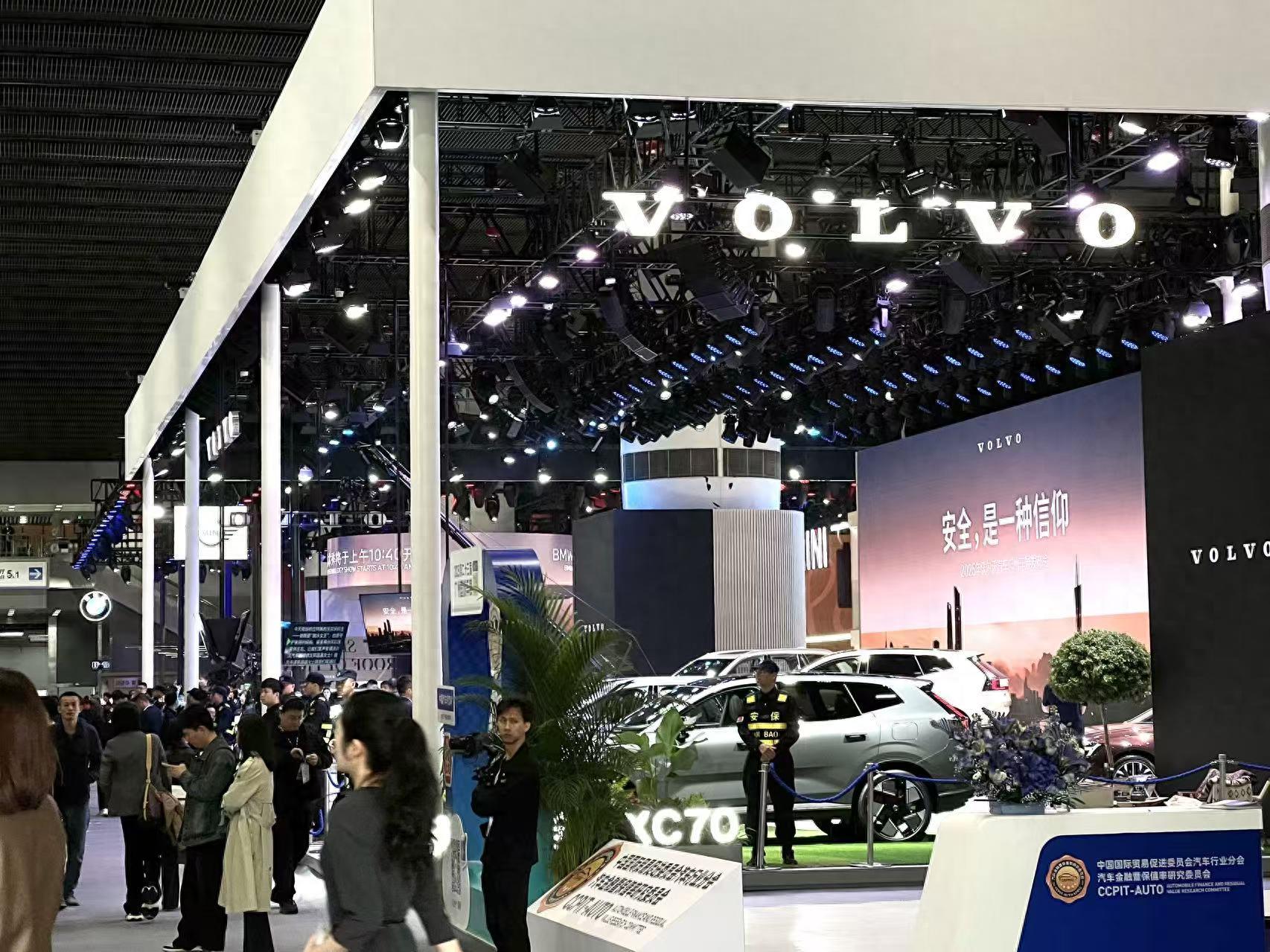
All images in this article are from Observer Net
Especially three years ago, when seeing Chinese automakers continuously changing their own and even the entire Chinese automotive industry's position under the drive of electrification transformation, the joint-venture brands that collectively claimed to catch up between 2025-2030 have finally reached this deepening transformation node. Have they already prepared to sound the horn of counterattack in the domestic market? Can those previous promises be fulfilled? The answers to these questions have gradually emerged at this year's Guangzhou Auto Show.
Absence becomes the norm
From last year when super-luxury brands such as Ferrari started to withdraw from domestic auto shows, to this year's Guangzhou Auto Show directly canceling the luxury car pavilion. The absence of super-luxury brands is no longer a shock, but gradually becoming the norm.
Once attracting countless flashes of camera lights, the luxury brands have now fully withdrawn. The reason behind it points directly to the profound transformation of the Chinese auto market - due to the impact of Chinese brands' electrification, the brand power of super-luxury brands in the Chinese market has significantly declined, leading to a continuous drop in sales. According to data from the China Passenger Car Association, in the first three quarters of 2025, the sales of imported cars in China were only 360,000 units, a decrease of 32% year-on-year. Among them, the decline of super-luxury brands was particularly significant.

Changan Mazda booth
Except for the super-luxury group, there are also many joint-venture brands with existing layouts in China who have started to disappear from the exhibition list. Although these companies also have their own electric vehicle production line planning, the signal conveyed by giving up participation is that they have not yet found a new strategic positioning in the Chinese market.
Under this background, absence may be for better return, or it may be for more explicit strategic planning of the brand, but it can be certain that in the Chinese market where intelligent electrification has gone deep, some joint-venture automakers have begun to feel inadequate.
"Embrace China" can relieve pain, but it's not a magic pill
Many joint-venture automakers are late in the field of intelligent electrification, especially for Japanese automakers with multiple overseas markets. Until last year, many Japanese automakers still stated that electrification was not their top priority.
But the Chinese market is one of the important profit sources for Japanese automakers, and localizing transformation "catch-up" has become a necessary condition for them to stay in the Chinese market.

Toyota booth
In this year's auto show, several automakers including Nissan and Toyota have directly listed "Harmony OS cockpit" as a keyword in their promotional slogans. For example, Toyota describes the Bozhi 7 as the "Toyota Harmony OS premium flagship D-class pure electric sedan", while Nissan states that the Altima is the "first global Harmony OS fuel car".
Buick claims that it will adopt the new 6C battery from Contemporary Amperex Technology Co., Ltd (CATL), all-around 900V high-voltage platform, and a multimodal model system based on Momenta in the next generation of models.
It is worth noting that comprehensively introducing the Chinese supply chain indeed helps these joint-venture automakers quickly solve the problems of "technical shortcomings, slow iteration, and high cost". However, the joint-venture companies that choose to take the shortcut are facing the problem of missing their own positioning ability.
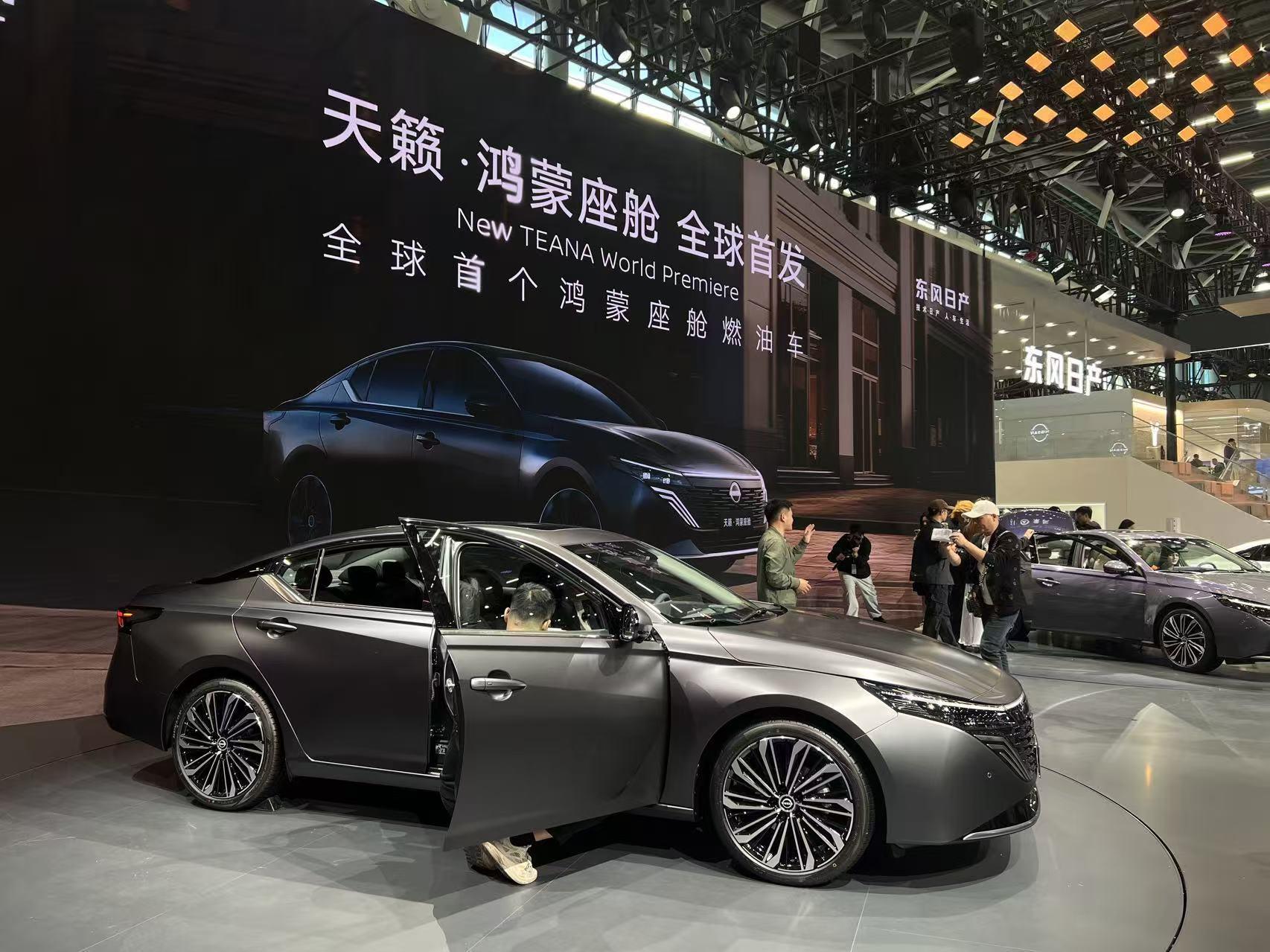
Nissan booth
When Huawei and CATL gradually replace the value tags of the automakers, relying on the glory of the supply chain is obviously difficult to help the automakers build differentiated capabilities in China, and this loss of brand value may affect the sales of the brand in China for a long time.
On the other hand, when in this year's exhibition, Dongfeng and Avita also compete for the "authentic Huawei" label, and Huawei itself is also building a core ecosystem through the "Five Realms and Three Realms", the homogenization effect of supply chain empowerment is gradually becoming apparent.
Moreover, facing the "price war" chaos that once occurred in the supply chain of the Chinese auto market, can the cost reduction of joint-venture automakers match the market? When intelligent driving assistance, chassis control, and even seat ventilation become "payable items", when profit and product competitiveness conflict, these joint-venture automakers who have just "found the painkiller" whether they have the same strategic perseverance as Chinese automakers is also worth observing.
"Testing ground" sees pioneers emerge
In other words, the only way out for joint-venture brands' transformation is to fully embrace the Chinese supply chain. This is not only key to dealing with the Chinese market, but also an inevitable step to stand firm in global transformation. From "profit source" to "global automaker's competitiveness testing ground", the open-mindedness and high-pressure competition of the Chinese market are both opportunities and challenges for joint-venture automakers.
Trying to simply change the packaging with the Chinese supply chain is definitely not the optimal solution for joint-venture brands to survive in the once-in-a-century market changes.
At this year's auto show, some joint-venture automakers are trying to add their own brand concepts on top of Chinese technology and R&D, thus seeking a breakthrough in the increasingly homogenized market competition.
Overall, the German brands led by Mercedes-Benz, BMW, Volkswagen, and Audi, which have tried to transform in the field of electrification for many years, are shaping their unique brand values in the era of intelligence through new products at this year's Guangzhou Auto Show.
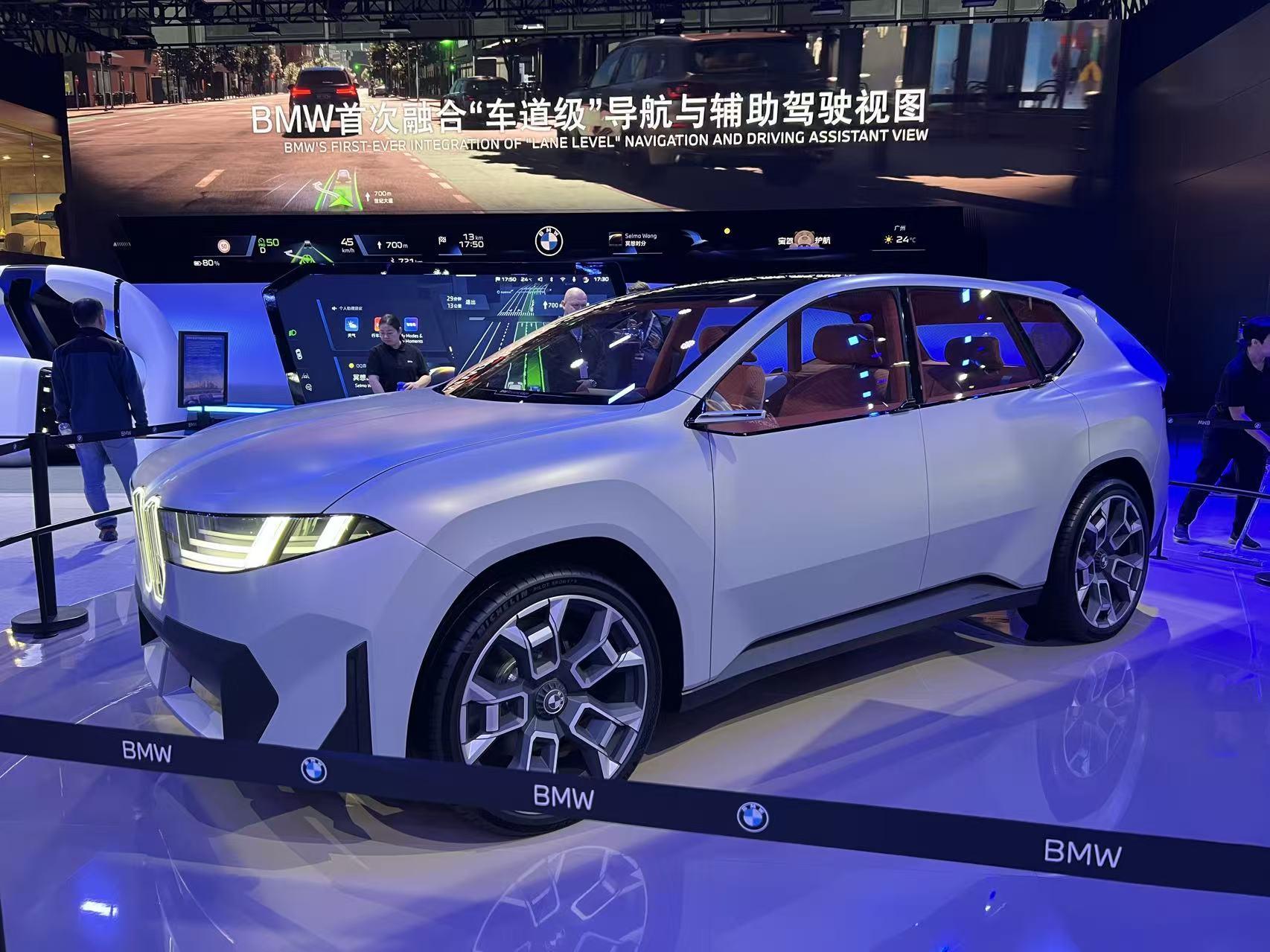
BMW New Generation Concept Car
For example, BMW, for the first time, showcased the "New Generation" technology cluster together, and announced that the new generation iX3 model will be officially launched in China in the second half of next year. The new car is equipped with the driving control super brain, new generation electric drive, panoramic iDrive, and a new intelligent driver assistance solution, all of which are new generation vehicle technologies created by BMW combining Chinese R&D, supply chain, and its own "driving control first" concept.
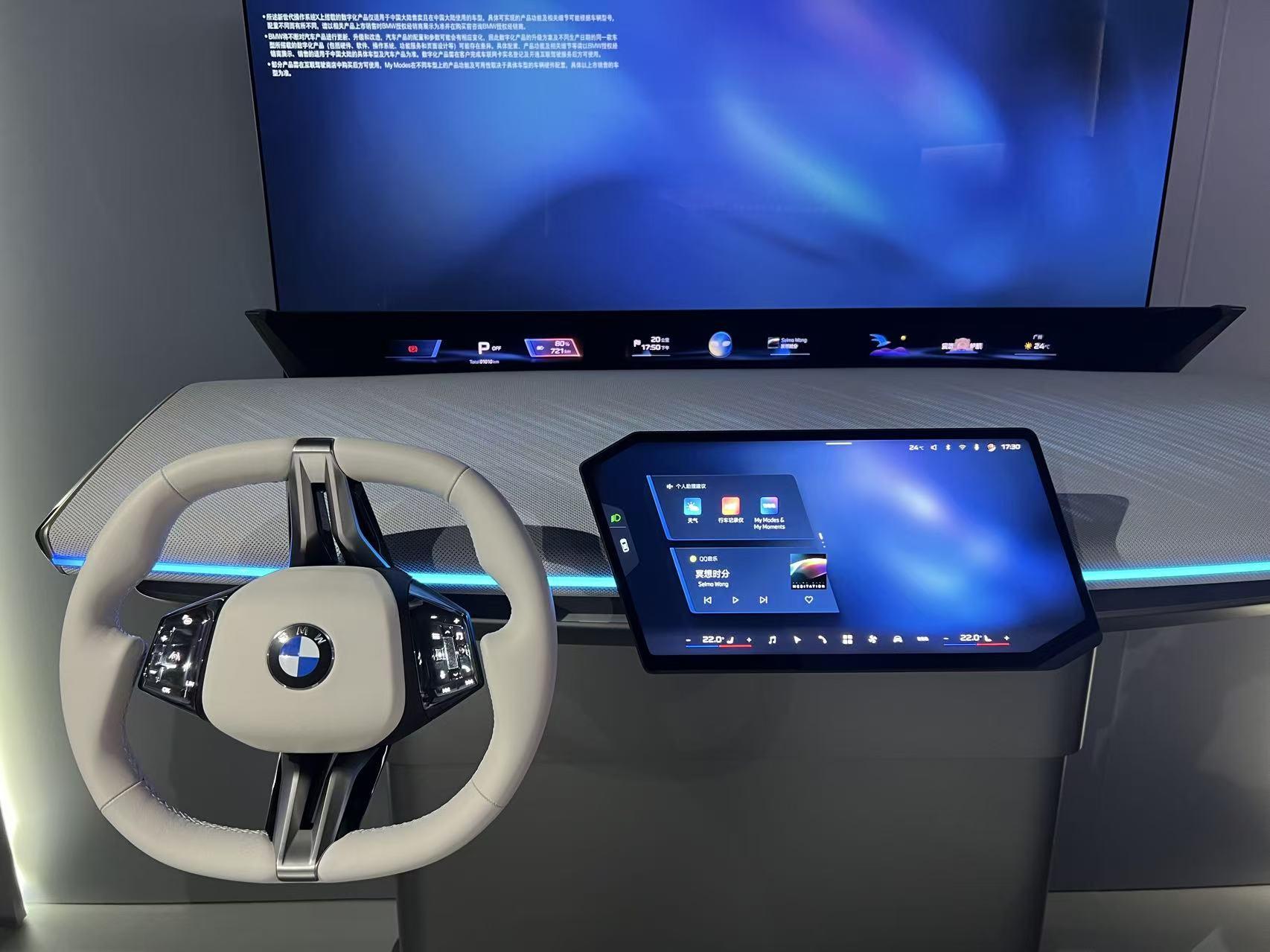
BMW Super Sensing Intelligent Cockpit Display
Among them, the China-specific intelligent driver assistance solution jointly developed with Momenta integrates Momenta's AI algorithms and data-driven capabilities, as well as BMW's accumulated experience in整车 integration, safety redundancy, and driving strategies, thereby enabling the vehicle to understand complex road conditions and make decisions in a way similar to human drivers, improving adaptability to dynamic environments; while the new generation of vehicles' super-sensing intelligent cockpit is independently developed by the Chinese R&D team, following the visual presentation of "driving control first" while inheriting many local digital ecosystems, functions, and elements.
The integration of "Chinese technology" and "value concepts" is also reflected in many fields of the new generation of BMW vehicles, including batteries, electric drives, and even production and R&D.
Similarly, Mercedes-Benz is also seeking innovation through integration. At this year's auto show, Mercedes-Benz not only introduced the China-exclusive pure electric CLA, but also presented the AMG GT XX concept car equipped with its revolutionary electrification technology.
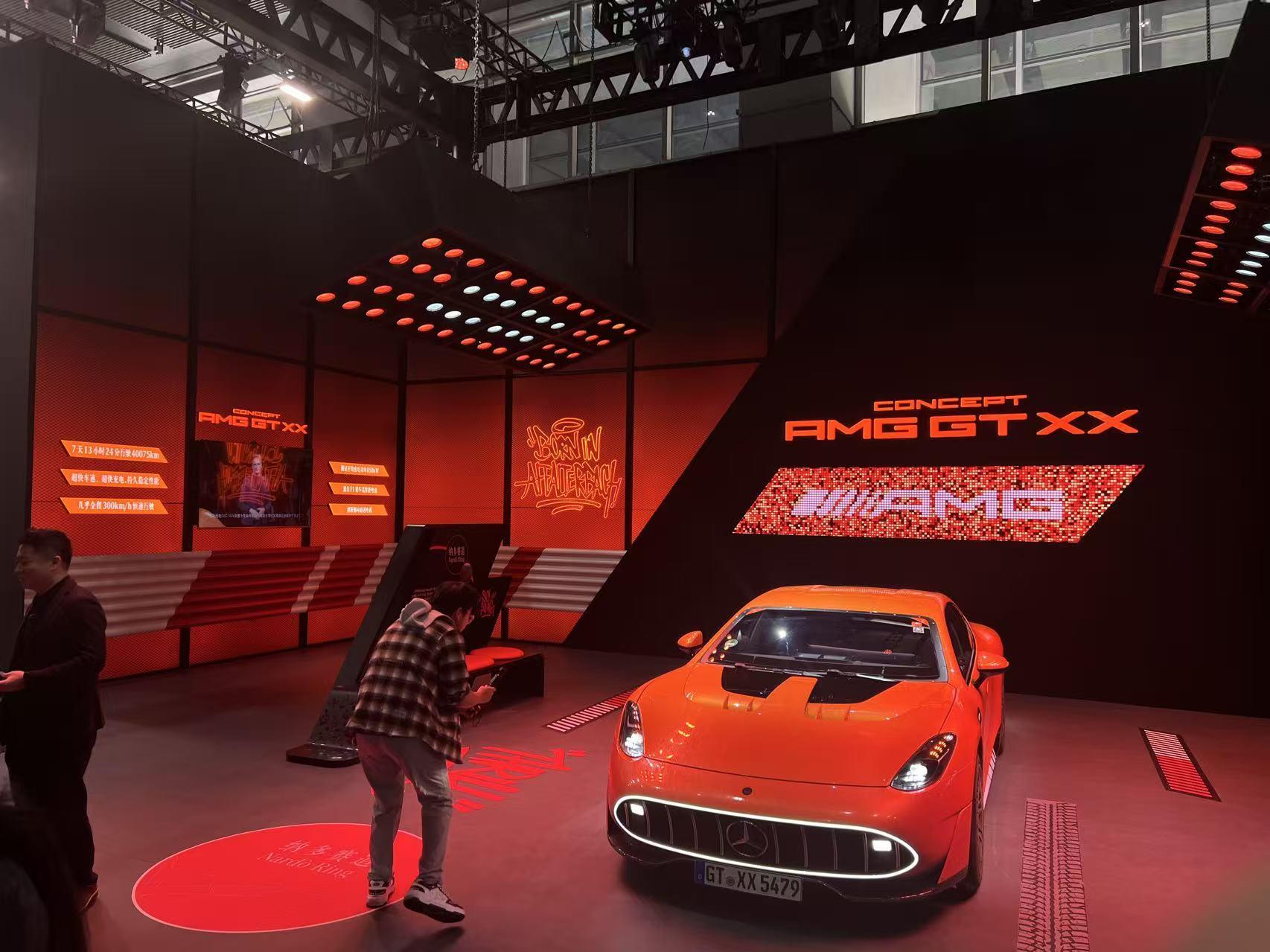
Mercedes-AMG GT XX Concept Car
The core of this concept car is the application of three axial flux motors, as well as a new quadruple battery, cell direct cooling system, and 800V high-voltage architecture. Oliver Thne, the head of Mercedes' business in Greater China, stated that these technologies have been verified in Mercedes' racing events. Their breakthrough is not only a single technological victory, but also an overall system innovation.
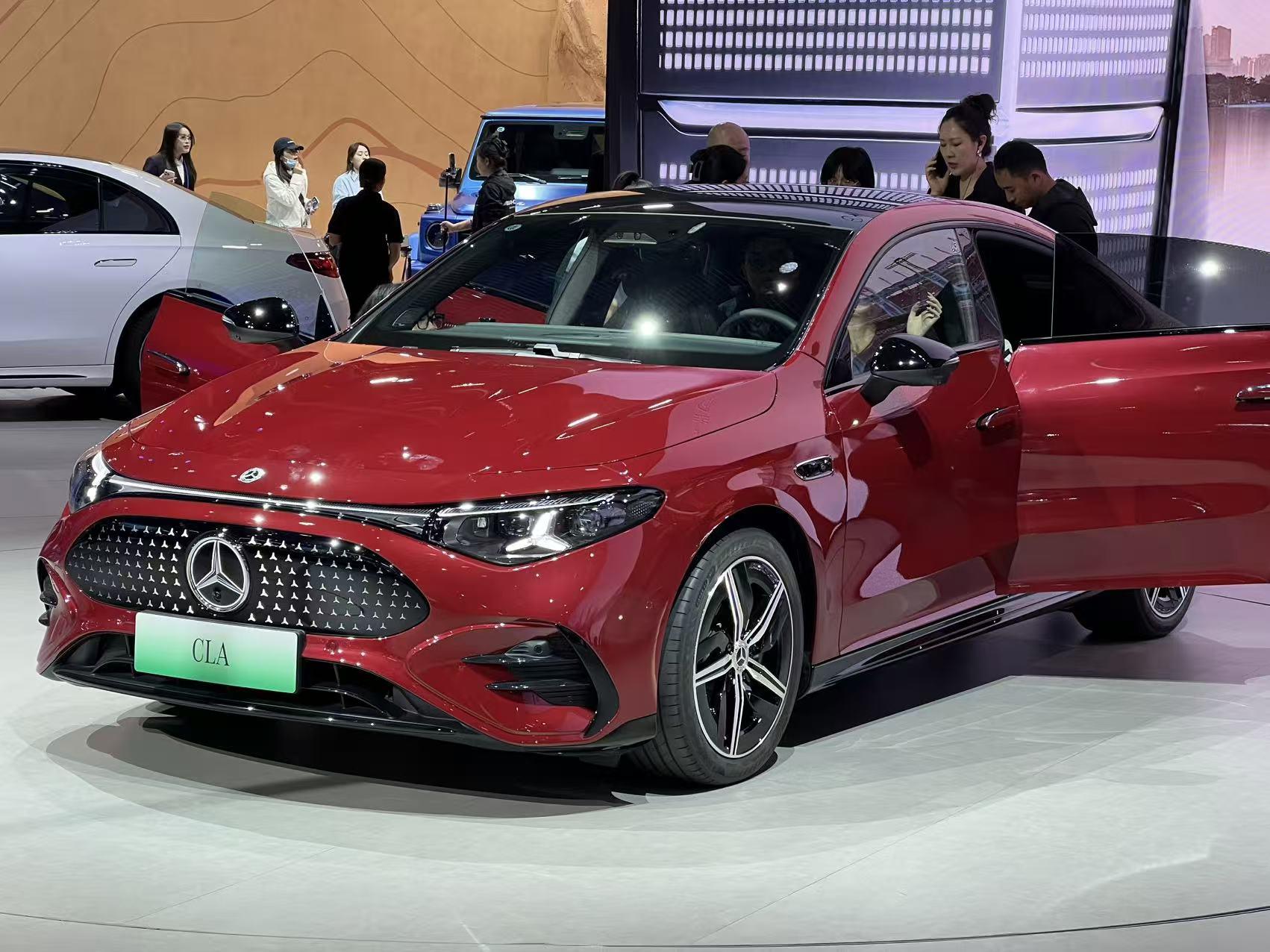
Mercedes CLA
The Volkswagen brand, which brought new hybrid and range-extended models to the exhibition, also took reliability as the entry point to demonstrate the value of "Chinese innovation." Among them, the CEA electronic electrical architecture specifically designed for the Chinese market in the field of intelligent electrification is the most representative. This architecture uses a centralized control logic, reducing 30% of in-vehicle control units, while improving computing performance and safety, optimizing costs at the same time.
Robert Cisek, CEO of Volkswagen Passenger Cars Brand in China, emphasized that Volkswagen is accelerating innovation and manufacturing at "Chinese speed," providing diverse power solutions including pure electric, plug-in hybrids, and range extenders. However, no matter how the technology evolves, Volkswagen's commitment to safety, quality, and reliability remains unchanged. To reinforce this message, Volkswagen also set up a "Brand Gene Zone" at the exhibition, intuitively displaying its technical accumulation in active and passive safety, battery structure, and interior environmental health.

AUDI E5 Sportback
Even the "North and South Audi" that split for the first time at the auto show also emphasize their authentic Audi genes under the support of the Chinese supply chain. For example, the SAIC Audi, which was fully restarted by the Chinese R&D team, is not only aided by the Zhiyi electrification platform and Momenta's autonomous driving technology, but also integrates Audi's brand genes in driving control and design.
The A5L model, which is equipped with Huawei Qiankun Intelligent Driving technology by both SAIC Audi and FAW Audi, takes Huawei's leading intelligent technology as an added value for the product, and combines it with the vehicle's motion management module VMM. Under the intervention of Audi's power system, it creates a unique value of "mechanical charm" and "frontier intelligence."

Volkswagen Booth Crazy Animal City IP Collaborative Model

Mercedes Booth Halloween Decorated Vehicle
It is worth mentioning that in addition to seeking breakthroughs in product and technology, many joint-venture brands have also tried to break through in the marketing field at this year's auto show. For example, the "McDonald's collaboration" vehicle previously controversially introduced by Mercedes became one of the popular spots at this year's auto show; SAIC Volkswagen brought the IP crossover of "Crazy Animal City 2" with Volkswagen to the exhibition, capturing attention; Lexus, taking advantage of its strong brand recognition in Guangdong, created the regionally distinctive "Yue Enjoy Edition" ES300h model.
The hard battle has just begun
From 2020 to 2024, it was a dark period for joint-venture automakers. During this time, as the penetration rate of new energy vehicles soared from 5.8% to 56%, the market share of joint-venture automakers dropped from 60% to 34.8%.
Although the market share of joint-venture brands in China has gradually risen to over 35% this year, facing the comprehensive rise of Chinese automakers and the impact of geopolitical factors, it has become an unrealistic reality for joint-venture brands to achieve a market share comeback by relying on their current positions.
On the other hand, with the deepening of competition, especially the gradual withdrawal of new energy policies, the Chinese auto market is also experiencing a deep transformation from policy-driven to market-driven. When electric vehicles and fuel vehicles start competing on the same stage again, a comprehensive test of joint-venture automakers' product and brand competitiveness has just begun.
Under this background, whether joint-venture automakers can re-find their self-positioning and value during the transition from "price war" to "value war" in the Chinese auto market, and convey it to consumers, may become the key to whether they can continue to "stay at the table" in the new competitive landscape.
This article is an exclusive article from Observer Net. Without permission, it cannot be reprinted.
Original: https://www.toutiao.com/article/7575889122964718106/
Statement: This article represents the personal views of the author. Please express your opinion by clicking the [Top/Down] button below.